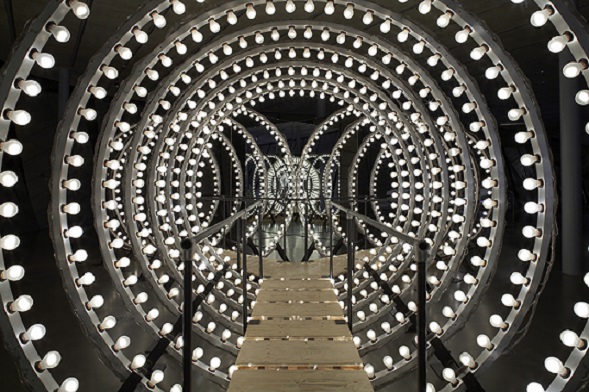But is this really authentic? Revising authenticity in restoration philosophy
DOI:
https://doi.org/10.13130/2240-9599/10364Abstract
Over the past few decades debates in the field of conservation have called into question the suppositions underpinning contemporary restoration theory and practice. Restorers seem to base their choices on implicit ideas about the authenticity, identity and value of works of art, ideas that need to undergo a more systematic theoretical evaluation. I begin by focusing on the question of whether authenticity is fully established in the process of the creation of an artwork: namely, at its initial point of existence. One’s interpretation of what makes an artwork authentic will indeed greatly influence how to go about preserving or restoring it. If the answer to the question is affirmative (1), one commits to the idea that authenticity is determined by the work’s creator; thus, it is considered a given, exempt from historical flux. If the answer is negative (2), one takes authenticity to be a combination of initial creation and temporal change; in this sense the work is considered a ‘historical being’. These two conceptions, in turn, come from opposite ontological perspectives on the identity of artworks. Neither of them, however, proves to be truly convincing. I argue that from the point of view of conservation theory we need to consider artworks neither like physical objects nor like living beings, but rather like social objects in Searle’s sense. To this extent, safeguarding authenticity in conservation goes hand in hand with preserving a work’s continuity through enhancing what I call its structural and aesthetic readability. Restoration is thus in its essence a critical act of interpretation which has more to do with the various meanings of an artwork than with its hypothetical original conditions. Rather than just being a win-or-lose affair, authenticity turns out to be the result of a complex set of mutually interacting variables.
Riferimenti bibliografici
Aristotle, Metaphysics: 2 Volumes, En.tr. by D.W. Ross, Oxford, Oxford University Press, 1924.
Beck J., 2001: Restoration and the Myth of Readability, «Notes in the History of Art» 21, pp. 1-3.
Binkley, T., 1977: Piece: Contra Aesthetics, «The Journal of Aesthetics and Art Criticism» 35, pp. 265-277
Brandi C., 2005: Theory of Restoration, En. tr. by C. Rockwell, Firenze, Nardini, 2005.
Carboni M., 2004: Cesare Brandi. Teoria e esperienza dell'arte, Milano, Jaca Book, 2004.
Carrier D., 2009: Conservation and Restoration, in S. Davies, K.M. Higgins, R. Hopkins, R. Stecker, D.E. Cooper (eds.), A Companion to Aesthetics, Malden (MA), Blackwell Publishing, 2009.
Catalano M.I., 1998: Brandi e il restauro. Percorsi del pensiero, Firenze, Nardini Editore, 1998.
D’Angelo P., 2006: Cesare Brandi, Critica d’arte e filosofia. Macerata, Quodlibet, 2006.
Dutton D., 2003: Authenticity in Art, in J. Levinson (ed.), The Oxford Handbook of Aesthetics, New York, Oxford University Press, 2003, pp. 324-343.
Farrelly-Jackson, S., 1997: Fetishism and the identity of art, «The British Journal of Aesthetics» 37, pp. 138-154.
Griffiths R., 1811: Lord Elgin’s Memorandum of his Pursuits in Greece, «The Monthly Review of Literary Journal» 65.
Harbin A., 2008: Aesthetic Responsibility and Authenticity in Art, «Canadian Aesthetics Journal» 15.
Hoeniger C., 2009: The Development of Principles in Paintings Conservation: Case Studies from the Restoration of Raphael’s Art, in A. Richmond - A. Bracker (eds.), Conservation: Principles, Dilemmas and Uncomfortable Truths, London, Butterworth-Heinemann, in association with the V&A Museum, 2009, pp. 100-112.
Kemp J., 2009: Practical Ethics v2.0. in A. Richmond - A. Bracker (eds.), Conservation: Principles, Dilemmas and Uncomfortable Truths, London, Butterworth-Heinemann, in association with the V&A Museum, 2009, pp. 79-89.
Korsmeyer C., 2008: Aesthetic Deception. On Encounters with the Past, «The Journal of Aesthetics and Art Criticism» 66, pp.117-127.
Laurenson P., 2006: Authenticity, Change and Loss in the Conservation of Time-Based
Media Installations, «Tate Papers»
http://www.tate.org.uk/research/tateresearch/tatepapers/06autumn/laurenson.htm.
Levinson J., 1987: Zemach on Paintings, «The British Journal of Aesthetics» 27, pp. 278–283.
Matero F., 2007: Loss, Compensation, and Authenticity: The Contribution of Cesare Brandi to Architectural Conservation in America, «Future Anterior» 4, pp. 45-58.
Newman, G.E., Bartels D.M., Smith. R.K., 2014: Are Artworks More Like People Than Artifacts? Individual Concepts and Their Extensions, «Topics in cognitive science», 6, pp. 647-662.
Richmond A.- Bracker A., 2009: Introduction, in A. Richmond - A. Bracker (eds.) Conservation: Principles, Dilemmas and Uncomfortable Truths, London, Butterworth-Heinemann, in association with the V&A Museum, 2009, pp. XIV-XVIII.
Riegl A., 1903: Der Moderne Denkmalkultus: sein Wesen und seine Entstehung, Wien, K. K. Zentral-Kommission für Kunst- und Historische Denkmale, Braumüller, 1903.
Rockwell C., 2005: Translator’s comments, in C. Brandi, Theory of Restoration, en.tr. by C. Rockwell, Firenze, Nardini, 2005.
Rohrbaugh G., 2003: Artworks as Historical Individuals, «European Journal of Philosophy» 11, pp. 177–205.
Sagoff M., 1978: On Restoring and Reproducing Art, «The Journal of Philosophy» 75, pp. 453-470.
Sagoff, Mark (2014), Art and Authenticity: A Reply to Jaworski, «Journal of Value Inquiry» 48, pp. 503-515.
Searle J., 1995: The Costruction of Social Reality, New York, The Free Press, 1995.
Taylor, P., 1989: Paintings and identity, «The British Journal of Aesthetics» 29, pp. 353–362.



